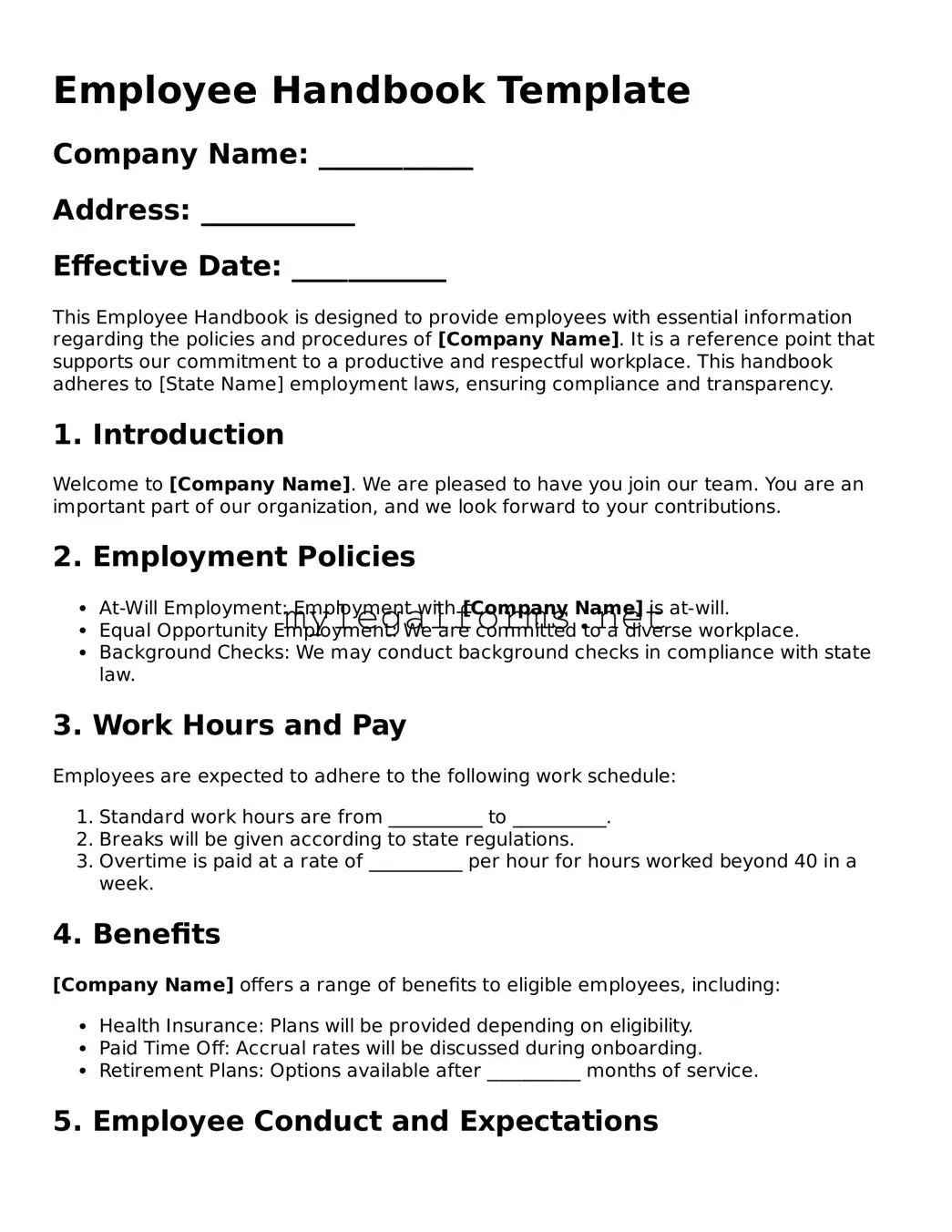Employee Handbook Template
Company Name: ___________
Address: ___________
Effective Date: ___________
This Employee Handbook is designed to provide employees with essential information regarding the policies and procedures of [Company Name]. It is a reference point that supports our commitment to a productive and respectful workplace. This handbook adheres to [State Name] employment laws, ensuring compliance and transparency.
1. Introduction
Welcome to [Company Name]. We are pleased to have you join our team. You are an important part of our organization, and we look forward to your contributions.
2. Employment Policies
- At-Will Employment: Employment with [Company Name] is at-will.
- Equal Opportunity Employment: We are committed to a diverse workplace.
- Background Checks: We may conduct background checks in compliance with state law.
3. Work Hours and Pay
Employees are expected to adhere to the following work schedule:
- Standard work hours are from __________ to __________.
- Breaks will be given according to state regulations.
- Overtime is paid at a rate of __________ per hour for hours worked beyond 40 in a week.
4. Benefits
[Company Name] offers a range of benefits to eligible employees, including:
- Health Insurance: Plans will be provided depending on eligibility.
- Paid Time Off: Accrual rates will be discussed during onboarding.
- Retirement Plans: Options available after __________ months of service.
5. Employee Conduct and Expectations
All employees are expected to maintain a professional work environment. Respect and integrity are paramount.
- Dress Code: Our dress code is __________.
- Attendance: Notify your supervisor of any absences promptly.
- Substance Abuse: A zero-tolerance policy applies.
6. Health and Safety
The safety of our employees is our priority. Adhere to the following guidelines:
- Report all workplace injuries immediately.
- Participate in all required safety training sessions.
- Follow all emergency protocols in place.
7. Disciplinary Procedures
Failure to comply with company policies could result in disciplinary action, ranging from warnings to termination.
8. Acknowledgment
By signing below, you acknowledge that you have received and read [Company Name] Employee Handbook.
Employee Signature: _________________________
Date: _________________________
9. Contact Information
If you have questions about this handbook or any policies, please contact:
Name: ___________
Email: ___________
Phone: ___________
